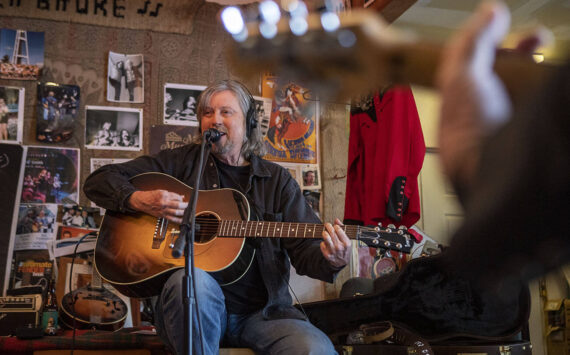ARLINGTON — While there’s little demand at the moment for condos with excellent views from the top of Burn Hill, the city of Arlington continues to work on its plan for the transfer of development rights program to protect agricultural lands in the Stillaguamish Valley.
“I am committed to preserving the farms between downtown and I-5,” Mayor Margaret Larson repeats regularly, and she is getting a reputation around the state. Larson has made at least six trips to Seattle with Bill Blake, the city’s natural resource manager and assistant community development director, to meet with the TDR committee of the state’s Community Trade and Economic Development.
Arlington is hosting another meeting at 6:30 p.m., Oct. 30, at Pioneer Hall, to take input from farmers and developers that they hope will help make the TDRs workable for all.
“I think this is the right thing for the future,” Larson told The Arlington Times.
“People need to realize this is a complex partnership between the city and the county, the farmers and the developers. This is a pilot project and could pave the way for other communities,” she said.
The key is to make it simple and market driven, Blake said.
TDRs are based on the theory that farmers and ag-land owners have the right to sell their land. In order to discourage them from subdividing the farm, the TDR program would enable a reimbursement for the value of developing their land. A developer would pay them for the number of buildable lots they own, and then go and build those lots in the receiving area on the hill.
“We are telling the state they need to step up and help with funding to make it work,” Larson said.
A developer who has purchased a portion of Arlington’s receiving area to develop, Noel Higa agrees with Larson.
“This is the most innovative proposal in the western United States. If we can figure out how to make it work, we will be a model for the nation,” Higa said.
“One challenge is to determine who is paying for the infrastructure,” Higa said.
The solution could go back to the Growth Management Act in more ways than one.
If the state meets its end of the deal by providing infrastructure, and if the county would cut back on rural cluster subdivisions, then the city’s TDR program would have the potential to work.
“It may be 20 years before we have a market for condos on the hill,” Blake told the City Council recently.
“But we need to keep working at the TDR program so we will be ready.”
Higa believes the city needs to start thinking in urban terms, instead of suburban.
“If they want to absorb the potential of all the valley, it will take a lot of housing units. Also, the farmers need to have a realistic view of the value of their property,” Higa added.
To benefit the farmers, Blake is encouraging county officials to recognize the floodway and other critical areas in counting TDR credits.
“But the farmers will have to recognize that acreage is not as valuable as buildable lots,” Blake said.
Blake also believes the state should step up if it is serious about protecting farm land and flood plains.
“They should prioritize their funding programs to reward those communities making it happen,” Blake said.
“We have to keep in mind our purpose,” Larson said. “It’s not about us. It’s about the future generations.”
Larsen talks jobs
U.S. Representative Rick Larsen will be in town Oct. 29 to discuss economic recovery. He’ll be at an employment fair at Meridian at 10:15 a.m., Oct. 29, and he’ll go from there straight to the Stillaguamish Senior Center, 18308 Smokey Point Blvd, in Arlington at 11 a.m.
“Now is the time to move from financial rescue to economic recovery,” Larsen said last week.
“After the election, Congress will come back into session to consider a long-term economic recovery and jobs creation package. If we succeed, help will be on the way in as little as three months to create jobs here in Washington state, invest in local roads, highways and bridges, and help families who are struggling.”
Public hearing on surface water taxes in the county
A public hearing has been set for Nov. 5 for Snohomish County Council to take input on proposed changes to Surface Water Management taxation. Max Albert is concerned they will push through a 158 percent increase without people knowing about it.
“There are two ordinances, No.25 and No. 25A and No. 25A covers the Stillaguamish watershed,” said Albert, who is an alternate for the Clean Water District for SWM.
Meeting on
homelessness
A special meeting on homelessness in Arlington was announced by the city’s ministerial association, said Deena Jones, for Arlington United Church. Anyone interested in helping find solutions to people sleeping on the streets should attend the meeting at 7 p.m. Thursday, Oct. 30 at Our Saviour’s Lutheran Church, 615 Highland Dr., in Arlington. For information call 360-435-3259.







